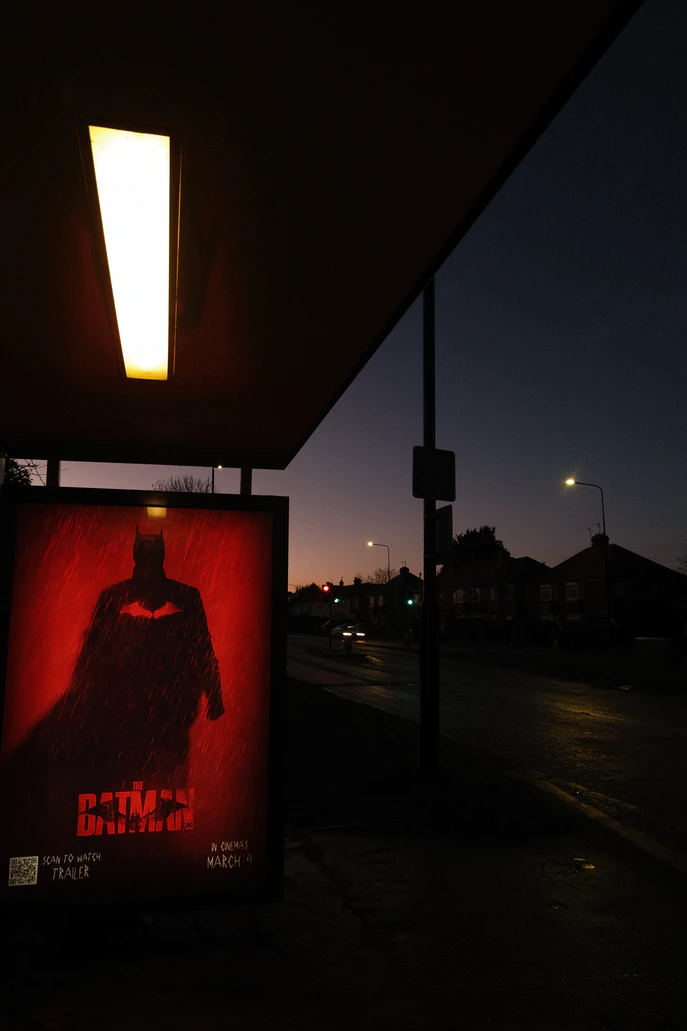The trailer begins unsuspectingly — a man sits alone at a diner counter. Police officers then swarm him, arresting and dragging him away. The camera pans over his abandoned coffee mug to show a question mark crafted by foam. Only in the next shot, of the iconic bat signal, does everyone in the theater realize they are seeing a preview for “The Batman.”
“Another one?” an audience member blurts out.
Their skepticism is understandable. This film marks the eleventh live-action adaptation of Batman since 1966, with its star, Robert Pattinson, being the third Batman actor in less than 20 years. The continued prominence of Batman in mainstream culture begs the question: how does a universally recognizable, 80-year-old character with countless appearances across mediums stay relevant?
“The Batman” answers this by taking several different approaches to the material than previous installments. By focusing on Batman’s early career, the movie depicts a hero still coming into his own — honing his skills, molding his worldview and figuring out what he should symbolize to the people of Gotham. It’s charming to see a character usually defined by extreme competence stumble his way through a complex case. Bruce Wayne’s reclusivity and awkwardness, having not yet developed his playboy persona, is another welcome change. Expertly portrayed by Robert Pattinson, it provides moments of humor and a path for future growth.
Batman’s personal journey within the movie deals with understanding how his vigilantism has impacted the criminals he aims to frighten and the citizens he seeks to protect. This understanding, and Batman’s overall view of Gotham, is influenced by his antagonist, the Riddler, and partner, Catwoman. Both characters reveal the darker side of the institutions meant to help Gothamites and act as foils to Batman, insisting that change can only come with a level of violence that the hero is unwilling to condone.
This relationship of a villain with similar goals to the protagonist, but more radical means, has become fairly common in superhero media, like in Marvel’s “Black Panther.” It serves the hero’s growth and creates a more compelling antagonist, which is a strength of “The Batman,” with its various villains.
The Riddler, whose schemes drive the plot, is the most stark example of how the film adapted to the modern world. He utilizes technology and the dangers of internet-spread extremism to enact his will on Gotham. The familiarity of his livestreams to fans is both absurdly funny and worryingly reminiscent of how violence can be incited across screens. This gritty take on the character is also a perfect vehicle for the detective noir style that “The Batman” embraced, which is too often shunned in favor of fast-paced spectacles. Even with its less action packed sequences, the movie is suspenseful and never dull.
Catwoman is another stand-out character, acting alongside Batman but not always in harmony with him. She challenges and grounds his notions about heroism and villainy while also being a complex, independent agent. The weaving in of mobsters Carmine Falcone and the Penguin add depth to the world without making the storyline bloated.
Jim Gordon, Batman’s ally in the police force, is more active in the plot and his relationship with Batman than any previous depiction. The camaraderie between the straight-laced cop and brooding, bat-themed vigilante is a steady source of entertainment throughout the movie. Unfortunately, the interactions between Bruce and his butler, Alfred Pennyworth, are more sparse, but always engaging.
Through its reimagining of classic supporting characters, the city of Gotham and the eponymous hero himself, “The Batman” proves that heroes from long ago can continue to captivate audiences. These stories can transform to modern tastes, commenting on relevant issues, while continuing to share their timeless messages of hope in the face of darkness.
- Mind Your Business: How TV is Suffering From Corporate Control - April 28, 2023
- “The Batman” Review - March 25, 2022

